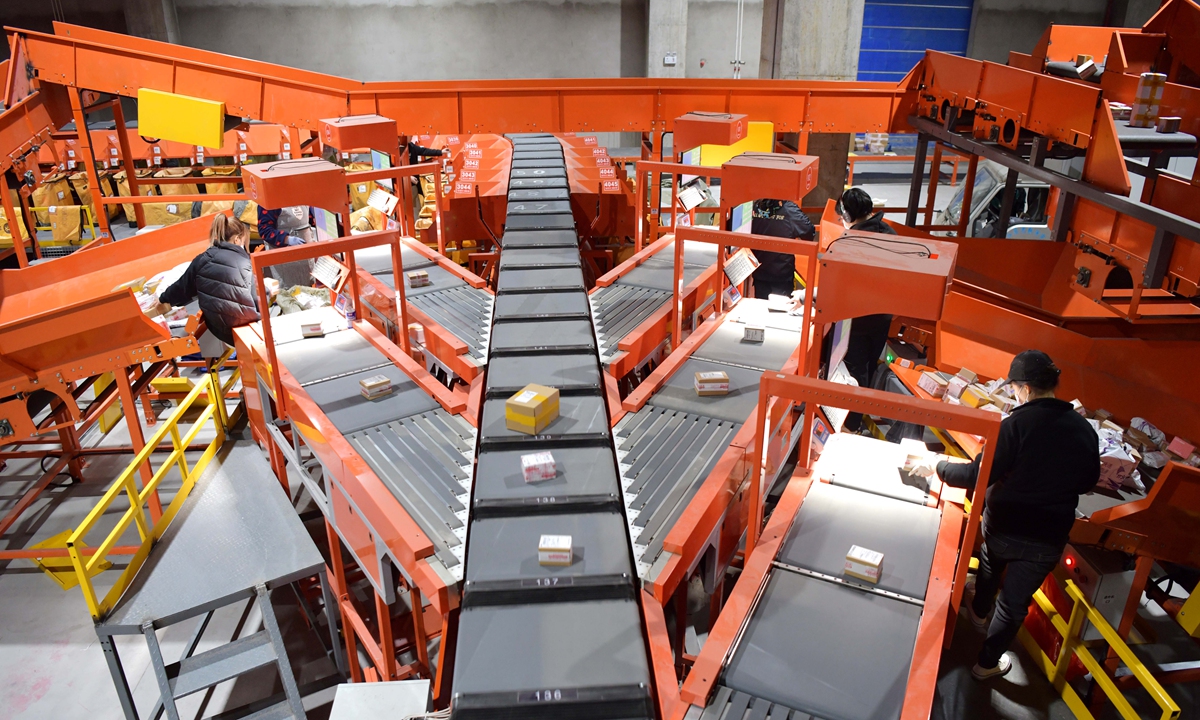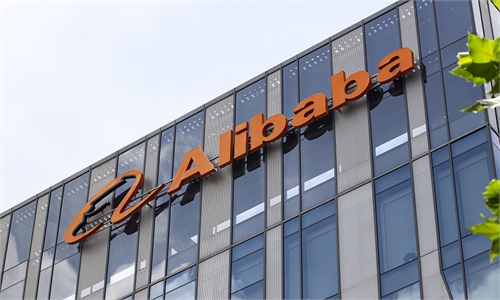
Workers sort parcels at night in an e-commerce industrial park in Lianyungang, East China's Jiangsu Province on November 2, as parcel volume surges during China's online shopping spree. E-commerce platforms started the big sale on October 20 this year. Photo: cnsphoto
Alibaba, China's largest e-commerce platform which started as a cross-border e-commerce business, is now putting more focus on expanding its overseas business as a major company growth strategy.Zhang Yong, Alibaba chief executive and chairman, recently said that the overseas market has huge potential and that the firm's overseas business has grown rapidly, identifying it as one of the group's main growth drivers over the next few years.
In the context of weaker consumption this year, on November 18, Alibaba announced its second quarter financial report for the 2022 fiscal year, with top executives reflecting difficult market prospects at home. Accounting for deductions, revenue growth in the second quarter was only 16 percent, a record low since the firm's listing at the New York market in 2014.
Traditional core income sources, such as Taobao and Tmall's advertising fees and commission income, accounted for only 36 percent of total revenue, down from 50 percent two years ago.
In addition, Alibaba's Double 11 shopping festival sales this year failed to meet market expectations. Although transaction volume hit a new high, the flagship event's growth rate fell from 26 percent last year to 8 percent.
Zhang said in an internal letter that he hoped Alibaba will be more agile and flexible moving forward. Obviously, after experiencing the "slowest growth season" at home, it wants to ramp up efforts and develop new battlegrounds.
Zhang set the firm an ambitious goal for its Southeast Asian e-commerce platform Lazada: increasing gross merchandise volume (GMV) to $100 billion, five times its current amount.
Data from Lazada showed that it has maintained strong growth momentum. As of September, this year, Lazada's GMV, which operates in six major Southeast Asian countries, had exceeded $21 billion over the past twelve months, with net merchandise value growing year-on-year by over 60 percent, the quality of growth also continued to improve.
During Lazada's Double 11 this year, its live broadcast platform recorded 18 million views in Southeast Asia.
Li Chun, CEO of Lazada said that Lazada has won a strong user base and loyalty in Southeast Asia. And the firm continues to invest in technology, logistics and other infrastructure to support a growing number of Southeast Asian brands.
In Alibaba's view, the e-commerce business in Southeast Asia is a "big pie" that global internet giants are ready to fight for.
The epidemic has led to the e-commerce businesses flourishing. Last month, Sea, backed by Tencent, raised its e-commerce business's annual revenue forecast for the second time this year.
Research jointly released by Google, Temasek Holdings and Bain & Partners shows that the current e-commerce penetration rate in Southeast Asian nations is only 11 percent. Regardless of the overall scale growth or the increase in digital penetration, there remains huge room for future expansion.
It is estimated that by 2025, Southeast Asia's internet economy will double to reach at least $363 billion.
Global Times

